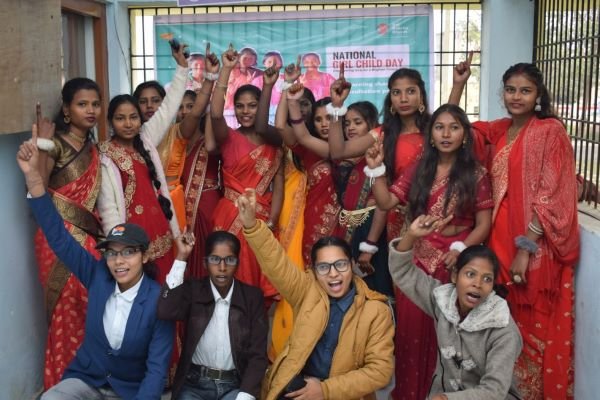INITIATIVE
PROMOTING RURAL TECHNOLOGY FOR SUSTAINABLE DEVELOPMENT
Simple ideas make lofty technology. Rural traditions of life and workmanship need a scientific revamp still maintaining its rural identity. The Ministry of Human Resource Development has been goading scientific transformation through Unnat Bharat Abhiyan. Rural Technology Action Group (RuTAG) is located in eight IITs and coordinated by the Office of the Principle Scientific Adviser (PSA) to the Govt. of India. The National Innovation Foundation has also been giving fillip to innovative ideas at the inception level and has success stories appreciated worldwide. Drinking water often remains contaminated with microbes and particles.Who has thought of making a earthen pot subjected to a compression that minimizes its pores that let in contamination? A simple strategy with profound effect costing barely 350 to 450 rupees! A baked clay technology for microbial filtration as well as for turbidity removal in drinking water at point-of use has even been displayed at science fairs. The contaminated drinking water is filled in the frustum (upperhalf of inverted cone) shaped filtering container made of baked salty clay, having micro- pores of nano size through which water percolates due to gravity. An average of 8 liters percolates in 10 hours. The percolated water filtrate remains free from contaminants of sizes larger than 10-6m to 10-9m. ‘The microbial test of E. Coli strains of MC4100 and W3110 showed 99.99% removal efficiency conforming to the required standards of drinking water set by the World Health Organization. Approximately 90% reduction in turbidity and 50% reduction of total dissolved salts and electrical conductivity is also achieved.’ asserts Prof A.K. Plappally from IIT Jodhpur. It has also been tested by National Test House, Jaipur.
This technology is the outcome of doctoral research performed by mechanical engineering students of IIT Jodhpur, Mr. Sandeep Gupta, Ms. Amrita Kaurwar and Mr. Raj Kumar Satankar under the guidance of Prof. A.K. Plappally. The research was supported by a seed grant from IIT Jodhpur. A Jodhpur based NGO called Rupayan Sansthan is enabling the technology transfer and dissemination to the individual potters by conducting small workshops.
Clay pots compatible for microwave ovens is an intriguing thing. Dr Lalithambika is a retired scientist from CSIR with expertise in Clay Science and Technology. ‘Clay has a lot of metal presence, mostly iron and lead. We use density separation and particle separation to get rid of their presence. And then the baked pot can withstand heating in a microwave oven.’ explains Dr Lalithambika about her heat-resistant pots. “We are providing training to potters on how to apply France’s ‘decoupage’ technique to decorate finished products, mainly those in terracotta category. Customer-specific decorations can be made on clay products using the technique. “ informs Dr Lalithambika who has been working with potters for over three decades. “We have already trained over 200 potters in Palakkad and they all feel that the value addition is beneficial. It helps them regain lost markets,” she says.
The state of Kerala has a sizeable potter population of over 650 colonies who were practicing traditional methods impinging upon efficacious production. The Department of Science and Technology of Government of India has been sponsoring the core support program of, ‘revamping of traditional pottery’. Integrated Rural Technology Centre (IRTC) under the Kerala Sasthra Sahitya Parishad (KSSP) has launched a major value-addition initiative by blending traditional Kerala pottery with French aesthetics, to ensure livelihood security for potters sponsored by Khadi and Village Industries Commission of Government of India. The value-added products are helping the potters find newer markets and earn better revenue. IRTC is also sending the products to retail networks in Delhi, Mumbai, and other major cities. The Department of Science and Technology of Government of India has also been sponsoring the initiative of, ‘value-addition of terracotta materials by modernization of techniques and introduction of innovative products’ and also the initiative of, ‘decorative pottery as an income generating activity for the weaker sections of the society’.
In the hilly regions above 6000 feet in the Himalayas, domestic fuel wood consumption tantamount to 10 metric tons per household of 5 to 6 members. 70% of this fuel is used up solely for heating house space and water. Dr Lal Singh surveyed this fact in Himachal Pradesh while running his NGO called Himalayan Research Group, a core group under the Department of Science & Technology of Government of India. According to him, solar water and space heating collectively mitigates around 5 metric tons of carbon emission per household per annum. Besides, indoor pollution is cut down and there is remarkable amount of forest conservation.
‘These areas have sunny days for most of the period in a year. We went on to install 200 solar water heating panel and 100 space heating panels in Shimla, Manali and Kullu districts of Himachal Pradesh. Now installing of 160 such panels is underway in remote and tribal valley of Zanskar in Jammu & Kashmir under DSTTIME- LEARN programme’, declares Dr Lal Singh. About the efficiency he says, ‘Solar water heating panel achieves 900 C water temperature in full sun initially in 35-45 minutes and successively in 20-25 minutes. It can provide 100- 200 litres of water per day on sunny days. Space heating panel blows air maximum at 650C and improve 100-150 C temperature of living space inside house and some warmth remains far beyond sunset lasting up to 10 pm. The entire installation can be made by a local carpenter and its cost hovers around `35,000 and after subsidy it comes down to below `20,000.

































